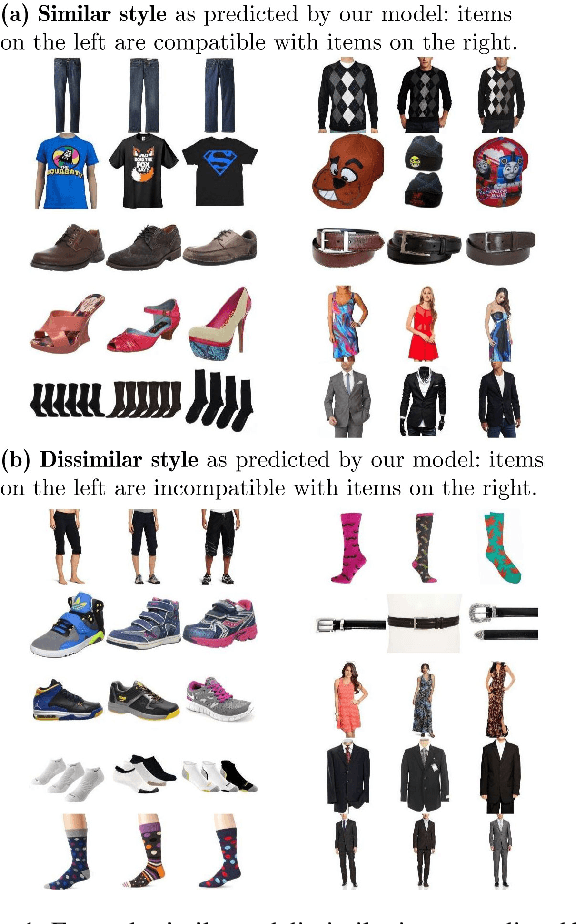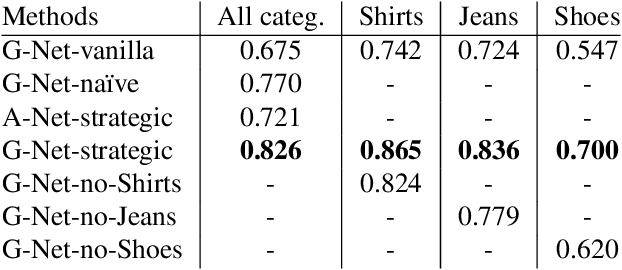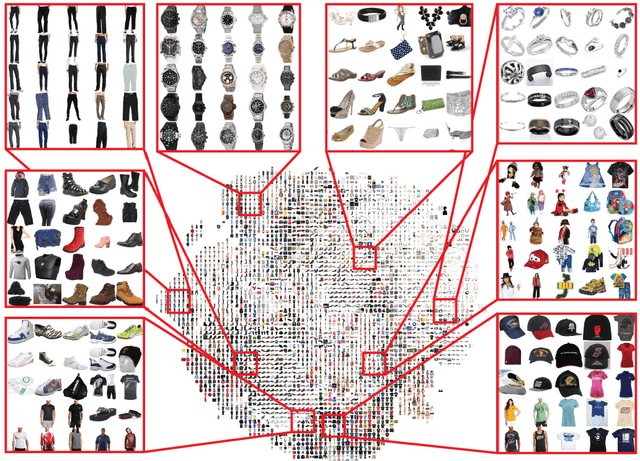Learning Visual Clothing Style with Heterogeneous Dyadic Co-occurrences
Paper and Code
Sep 24, 2015



With the rapid proliferation of smart mobile devices, users now take millions of photos every day. These include large numbers of clothing and accessory images. We would like to answer questions like `What outfit goes well with this pair of shoes?' To answer these types of questions, one has to go beyond learning visual similarity and learn a visual notion of compatibility across categories. In this paper, we propose a novel learning framework to help answer these types of questions. The main idea of this framework is to learn a feature transformation from images of items into a latent space that expresses compatibility. For the feature transformation, we use a Siamese Convolutional Neural Network (CNN) architecture, where training examples are pairs of items that are either compatible or incompatible. We model compatibility based on co-occurrence in large-scale user behavior data; in particular co-purchase data from Amazon.com. To learn cross-category fit, we introduce a strategic method to sample training data, where pairs of items are heterogeneous dyads, i.e., the two elements of a pair belong to different high-level categories. While this approach is applicable to a wide variety of settings, we focus on the representative problem of learning compatible clothing style. Our results indicate that the proposed framework is capable of learning semantic information about visual style and is able to generate outfits of clothes, with items from different categories, that go well together.
 Add to Chrome
Add to Chrome Add to Firefox
Add to Firefox Add to Edge
Add to Edge